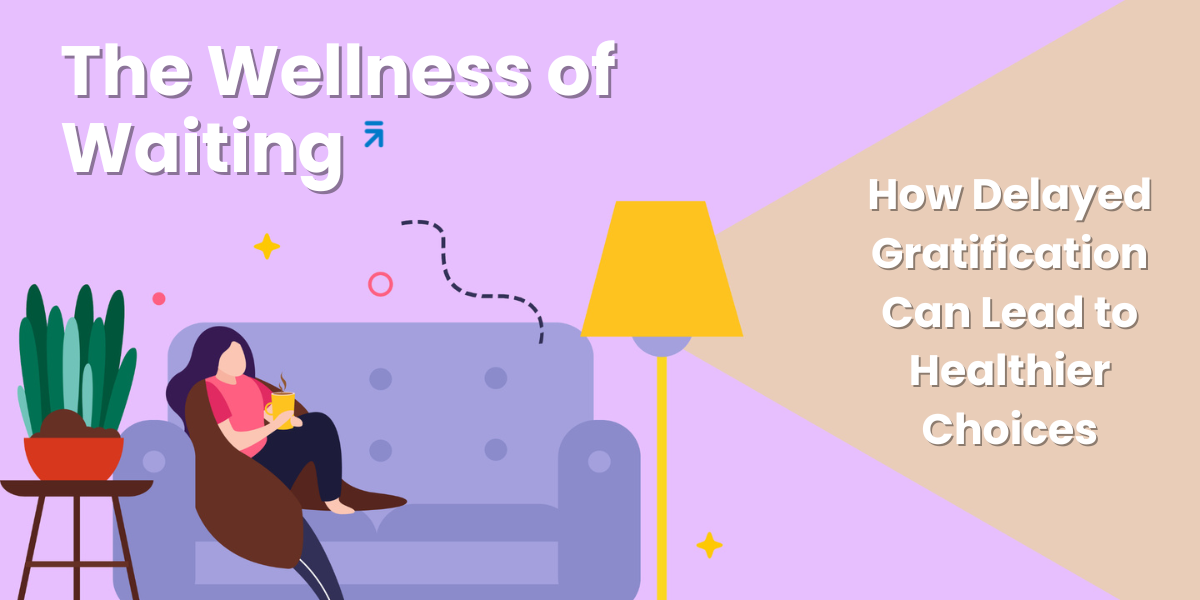Game On for a Healthier You: How Gamification Boost Exercise Motivation

Stay tuned to our latest news
In a world where technology has become an integral part of our daily lives, it's no surprise that it has found its way into the realm of health and fitness. Traditional methods of exercise and fitness routines have often struggled to captivate and maintain people's interest in the long run. But what if there was a way to make exercising not only enjoyable but also addictive? Enter gamification, a concept that combines the elements of gaming with real-life activities and has been revolutionizing the way we approach fitness.
Curious? Join us as we learn more on how gamification has the potential to turn exercise into an engaging, immersive experience that keeps us motivated and committed to our fitness goals. Whether you're a gaming enthusiast looking to take your passion for virtual challenges into the real world or someone seeking a fresh approach to staying active, this will provide you with insights and inspiration to level up your fitness game.
So, grab your virtual swords, put on your exercise gear, and let's explore how gamification can help you unlock the secret to a healthier, more motivated you!
Why Exercise Motivation is Important for Your Overall Well-Being?

Exercise motivation is crucial for maintaining overall well-being. It plays a significant role in achieving and sustaining a healthy lifestyle. When individuals have the drive and enthusiasm to engage in physical activity, they are more likely to improve their physical and psychological health outcomes.
Firstly, exercise motivation is vital for promoting physical health outcomes. Regular exercise helps to strengthen muscles, improve cardiovascular health, and enhance overall fitness levels. By staying motivated and consistent with exercise, individuals can reduce the risk of chronic illnesses such as obesity, diabetes, and heart disease. Furthermore, exercise motivation also contributes to weight management and maintaining a healthy body composition.
Secondly, exercise motivation has a direct impact on psychological health outcomes. Engaging in physical activity releases endorphins, the body's natural mood-enhancing chemicals, which significantly reduces stress, anxiety, and depression. Regular exercise has been shown to improve sleep quality, boost self-esteem, and enhance cognitive functioning. By being motivated to exercise, individuals can experience improved mental well-being and an overall positive outlook on life.
Moreover, exercise motivation increases engagement and enjoyment in physical activity. When individuals are motivated, they are more likely to participate in enjoyable activities and try new forms of exercise. This leads to a sense of achievement and satisfaction, which further reinforces their motivation to continue exercising.
Lastly, exercise motivation can reduce the perceived effort associated with physical activity. When individuals are motivated, they are more likely to approach exercise with a positive mindset, seeing it as a rewarding and fulfilling experience. This shift in perception can minimize feelings of fatigue and make the overall exercise experience more enjoyable.
How Does Gamification Enhance Fitness Apps?

Gamification has become an increasingly popular strategy in the world of fitness apps, revolutionizing how individuals approach their health and wellness goals. By incorporating game elements into these apps, such as rewards, challenges, and scoreboards, gamification enhances the user experience and motivation to achieve fitness goals.
So, let’s see how gamification enhances fitness apps by increasing user engagement, promoting regular physical activity, providing social support, and fostering a sense of accomplishment. With the vast array of fitness apps available today, gamification has emerged as a powerful tool to motivate and encourage individuals on their fitness journeys.
What Is Gamification?
First off, gamification is the application of game design and mechanics to non-gaming applications, with the aim of enhancing user engagement and motivation. By incorporating elements such as goals, progress tracking, and rewards, it taps into the innate human desire for achievement and competition.
One of the key ways that gamification motivates users is by setting clear goals. These goals provide users with something to strive for, giving them a sense of purpose and direction. Progress tracking further fuels motivation, as users can see how far they have come and how much closer they are to achieving their goals. This sense of progress is a powerful motivator, as it creates a feeling of accomplishment and satisfaction.
Rewards also play a crucial role in gamification. By providing users with tangible or intangible rewards, such as points, badges, or virtual goods, gamification reinforces desired behaviors and encourages continued engagement. Rewards provide a sense of immediate gratification, reinforcing the belief that effort leads to results.
Accomplishment, value, and autonomy are the three key factors that drive gamification. Accomplishment refers to the sense of achievement and progress that users experience when they complete goals. Value refers to the perceived worth or usefulness of the activities and rewards in the gamified system. Autonomy refers to the sense of control and choice that users have over their actions within the system.
What Game-Like Elements are Commonly Integrated in Fitness Apps?
Game-like elements commonly integrated in fitness apps include virtual rewards, challenges, leaderboards, progress tracking, and social interaction. These elements are designed to make fitness more engaging and motivating for users.
Virtual rewards, such as badges or points, are often given to users when they achieve certain milestones or complete specific tasks within the app. These rewards provide a sense of accomplishment and encourage users to continue working towards their fitness goals.
Challenges are another game-like element that can be found in fitness apps. Users can participate in challenges that involve completing a certain number of workouts or achieving a specific fitness goal within a given timeframe. These challenges create a sense of competition and give users a reason to push themselves harder.
Leaderboards allow users to see how their performance compares to others using the app. This fosters a competitive environment and motivates users to strive for the top spot. Progress tracking is also important as it allows users to see their improvement over time, further motivating them to continue their fitness journey.
Social interaction is another key element in fitness apps. Users can connect with friends and other users, share their progress, and even compete with each other. This social aspect adds an element of accountability and support, making fitness more enjoyable and motivating.
3 Positive Effects of Gamified Activities on Physical Activity
Gamified activities have been shown to have several positive effects on physical activity. Firstly, gamified activities often incorporate elements of competition and rewards. This can motivate individuals to engage in physical activity more regularly and intensively. By setting goals and offering incentives, such as virtual rewards or leaderboards, gamified activities provide individuals with a sense of accomplishment and satisfaction when they achieve these goals. This increased motivation translates into increased physical activity levels and better overall fitness.
Secondly, gamified activities often create a social and supportive environment. Many gamified platforms allow individuals to connect with friends or other like-minded individuals, creating a sense of community. This social component can encourage individuals to engage in physical activity together, whether through virtual challenges or in-person group activities. The support and encouragement from others can boost motivation and enhance the overall experience of physical activity.
Lastly, gamified activities often provide immediate feedback and progress tracking. This allows individuals to see their improvement over time, which can be highly motivating. Seeing tangible results and progress can build self-esteem and confidence, contributing to enhanced mental well-being.
These effects of gamified activities on physical activity directly contribute to enhancing mental well-being and improving the quality of life. Regular physical activity is known to have numerous mental health benefits, including reduced stress levels, improved mood, and increased self-esteem. By making physical activity more enjoyable and engaging, gamified activities provide individuals with a sustainable way to incorporate exercise into their daily lives. Ultimately, this leads to improved mental well-being, increased quality of life, and a stronger sense of overall satisfaction.
Are There Any Negatives to the Gamification of Fitness?

There are several potential negatives to the gamification of fitness in the industry. One of the main concerns is the risk of becoming overly competitive. While competition can be a great motivator for some individuals, it can also lead to feelings of pressure and stress. The focus on leaderboard rankings and comparison with others may cause some individuals to lose sight of their own journey towards better health.
Another negative aspect of gamification in the fitness industry is the emphasis on being data-driven. While tracking and quantifying activity can provide helpful insights, it can also lead to a reduction in enjoyment and motivation. Some individuals may feel discouraged if they are unable to meet certain targets or if they are constantly fixated on hitting specific numbers.
Additionally, the quantification of activity through gamification may have potential detrimental effects on mental health. The constant monitoring and comparison may create a sense of obsession and perfectionism. This can lead to feelings of anxiety and self-criticism, especially if individuals are unable to reach their goals or fail to consistently perform at a certain level.
Takeaway
The integration of gamification into the world of health and fitness has transformed the way we approach exercise. By combining gaming elements with real-life activities, gamification has made exercise enjoyable and addictive. It motivates individuals by setting clear goals, providing progress tracking, and offering rewards. Gamified fitness apps incorporate virtual rewards, challenges, leaderboards, and social interaction to enhance user engagement and motivation. While the gamification of fitness has numerous benefits, such as increased physical activity levels and improved mental well-being, it's important to be mindful of potential drawbacks. These include the risk of becoming overly competitive, the emphasis on data-driven metrics, and the potential negative effects on mental health due to constant monitoring and comparison. Finding a balance and prioritizing overall well-being are crucial in leveraging the power of gamification to unlock a healthier and more motivated lifestyle.
Renpho Health Tips
-

Navigating Temptations: How to Stick to Your Healthy Eating Habits
April 25, 2024
Read more >
-

Serenity in a Cup: A Soothing Journey Through Herbal Tea Traditions
April 21, 2024
Read more >
-

The Path to Wellness: 5 Tips for Developing Healthy Eating Habits
April 18, 2024
Read more >
-

Riding the Extra Mile: Boosting Cycling Motivation and Accountability
April 17, 2024
Read more >
-

The Wellness of Waiting: How Delayed Gratification Can Lead to Healthier Choices
April 15, 2024
Read more >





